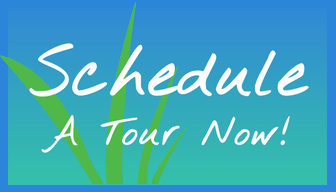By Ann Harman
For a least half a century, the prevailing idea of childhood development has been that the basic sequence of infant and child development, which includes learning to roll, reach, sit, creep, crawl, stand, and walk, is genetically predetermined. The “normal” sequence, with only minor variations, is relatively consistent from one child to another. However, the dynamic systems approach developed by Esther Thelen brings an alternative viewpoint that challenges this established theory.
Part of the established theory is that developmental sequences are controlled by the maturation process of the brain. In this concept, there is a central controller in the brain (which has never been identified) that leads the infant through a process beginning with primitive reflexes. With maturation, the primitive reflexes are suppressed, and more mature movements develop.
One of these primitive reflexes is the stepping reflex. A young infant, when supported upright, makes stepping movements that appear to be a precursor to walking. This reflex disappears after about two months, supposedly due to the maturation of the brain.
Dr. Thelen, a professor of psychology and cognitive science at Indiana University, noticed that babies older than two months make kicking movements, while lying on their backs, that resemble the stepping reflex. She became curious and did an experiment of supporting the infant in a tub of water, so that gravity was less of a factor. The stepping reflex returned! The she took infants who still had a stepping reflex, put weights on their legs, and saw that the stepping reflex was inhibited! She theorized that the stepping reflex was not inhibited by the maturation of the brain, but by the weight of the infant’s legs. (Babies double their weight within six months of birth.) This was only one in a series of experiments done by Thelen and her colleagues that brought doubts to established theories of development.
Dr. Thelen also observed that the developmental sequences of children are more variable than was previously believed. Yet, almost all children arrive at certain milestones such as crawling, standing, and walking, although by way of different routes. She theorized that certain movements are “attractors”, but the paths to these attractors are variable. Children are drawn to these attractors, but each finds his or her own pathway through trial and error. In other words, the process depends more upon experimentation, curiosity, and learning than was previously thought.
Roger Russell, a graduate student of Dr. Thelen and a Feldenkrais trainer, summarized the system by which children learn by the acronym EVASO:
E: Explore
V: Variations: Experiment with variations in moving.
A: Attend to how new systems self-organize.
S: Select patterns that are better
O: Optimize for functional effectiveness and movement quality.
When Dr. Thelen was exposed to the Feldenkrais Method of movement education, she was astounded to find that a system which not only used these principles of infant learning, but also applied them in a practical manner to adult education and rehabilitation, was already well-established and developed! She undertook the four-year training to become a Guild Certified Feldenkrais Practitioner (cm). Had it not been for her untimely death from cancer, she would have retired from research to apply these principles in the context of a Feldenkrais Practice.
When we think of early childhood learning, this is the period of life in which learning is faster than at any other time. A newborn has a very limited movement capacity, does not know language, and can not even recognize what s/he sees or hears. Within a few years, the child learns to identify sights and sounds, walk, run, climb, and speak the native language. This is a truly amazing amount of learning that happens within a few years, and this rate of learning slows in later life. (In fact, past concepts of maturation have included the idea that maturity means having learned all that we need to know!
So what is the relevance of childhood development to massage and bodywork? In the Feldenkrais Method, our viewpoint is that many of people’s ailments are due to their postural and movement problems. By relearning movement, using the principles of childhood development, many issues can be resolved. This can be done either by movement explorations (awareness through movement, or ATM) or by hands-on work based on movement exploration.
Ann Harman, D.O., LMT, will offer four classes in which we will use movement exploration, with either practice or demonstration of hands-on work, to explore how these principles apply to bodywork, self-healing, and adult learning. All classes meet the “Relevant to and Focused on Massage Therapy Techniques, Skills and Protocols” requirement.
The classes include:
Neck Pain, Tension Headache, and Eyestrain, May 20. https://floridaschoolofmassage.com/event/4007/2023-05-20/
Understanding Core Strength:
Understanding the Temporomandibular Joint
Foundations of Breathwork



